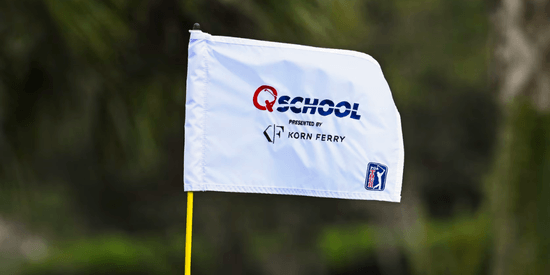Bob Lamkin: 5 ways your grip can impact your game
8/28/2012 | by AmateurGolf.com Staff
see also: Sponsor News

Lamkin Grips CEO Bob Lamkin breaks down the 5 grip factors that can either add or shave strokes to your score
1. The Wrong Size Golf Grip Will Hurt Your Game
I recently read an article on Golf.com that estimated more than 50% of golfers are using the wrong size grip. If you’re reading this and haven’t yet measured your hand for the proper grip size, or been fitted by a professional, then chances are pretty high that you’re using the wrong size grip… and it’s probably costing you about five strokes!
Lamkin is proud to offer the widest assortment of grip sizes in the industry. We have made this investment in our portfolio because properly fit grips lead to better performance and increased enjoyment.
For players using a grip that’s too large, hand movement is often restricted and can impact swing speed and shot distance. On the other hand, if a player is using a grip that’s too small, hand movement is too pronounced which leads to inconsistent shots and difficulty hitting the ball straight. In addition to hand size, players may consider physical limitations and swing mechanics when determining their ideal grip size.
For more information on grip fitting, visit your local PGA Professional or use the Lamkin Interactive Grip Selector.
2. Tacky, Tacky, Tacky
This seems to be the adjective used most often to describe a really great golf grip. From Tour players to weekend warriors, just about every golfer wants a golf grip that feels really tacky. Golf is one of the very few contexts in which “tacky” is used as a glowing endorsement.
Let’s take a step back, though, and consider exactly how a tacky golf grip impacts a golfer’s performance. The key benefit of increased grip tack is that it provides a stable, controlled connection between a player’s hands and their clubs. Essentially, it helps the club “stick” to a player’s hands. Without grip tackiness, a golfer uses increased grip pressure to try to create that stable connection.
What happens when a golfer is gripping their clubs too tight? Too much grip tension leads to too much tension in a golfer’s wrists and forearms, prohibiting proper shoulder movement which inhibits swing speed… and shot distance.
In essence, it is the tackiness of a grip that helps promote a light-pressure grip. With a light-pressure grip, a player’s hands, wrists and forearms are relaxed and ideally positioned to generate optimal swing speed and ball distance.
3. The Consistency Lesson
One of the most common regripping mistakes golfers make is replacing just one or two grips at a time. There is a good reason why Tour players are emphatic about the consistency of their grips. Getting just a couple of clubs regripped creates a dramatic “feel” difference between your clubs. That difference typically requires a gripping adjustment from club to club, which can lead to inconsistent shots and inconsistent performance.
To maintain swing consistency, it’s important that the condition of a player’s grips are consistent. In addition to size, texture and firmness differences between grips, there is often a substantial difference between the feel of a new grip and an older grip. Because of ozone and UV exposure, older grips are typically harder and more slick. Newer grips are generally much tackier with a softer feel. A player is more likely to apply more pressure to their clubs with older grips, and then less pressure to their clubs with newer grips. Inconsistent grip pressure between clubs leads to inconsistent swing mechanics and then to inconsistent shots.
The advice I offer to all of my golfing buddies is to regrip all of their clubs at the start of each golf season. Even with professional installation, a new set of grips costs about $80. A very worthwhile investment considering the grip is the one and only connection between a golfer and their equipment.
4. Beware of Super Soft Grips
I’m often asked about the grip choices of top Tour players and other low-handicap golfers. While there is a tremendous spectrum of preferences among “better” golfers (some prefer full-cord grips, others may like a wrap-style, etc.), there is one commonality among nearly all low-handicap players: they don’t use super-soft grips on their swinging clubs. Not a single PGA Tour player uses a super-soft grip for their swinging clubs.
Why? Lower handicap players usually have higher swing speeds. With a higher swing speed, it’s critical that there is no lateral movement (“torque”) in their grip. At higher swing speeds, even minor torque can lead to major variances in ball flight. Softer grips are much more likely to cause hand/grip movement during a player’s swing. Firmer grips are simply more rigid, and that rigidity leads to reduced torque.
Maybe you’re thinking, “I’m not a low handicap player, so it doesn’t matter if I use a super-soft grip”. Actually, that’s not quite the case. The tendency for any player using a super-soft grip is to squeeze harder on the grip (“bottoming out”) to establish a confident, slip-free connection with the club. Once again, the more tension in a player’s grip, the more distance is inhibited.
For players with arthritis or other joint problems, the solution isn’t necessarily a softer grip, but perhaps a larger grip. A larger grip allows a player to use increased grip strength without unnecessary grip pressure.
5. Old Grips = Higher Scores
Despite the numerous benefits of grip replacement, I’m amazed at the number of golfers who continue to use worn-out golf grips. Forget about the game-changing impact of using a correctly sized grip, let’s just focus on the millions of players who continue to use old grips.
The most common problem of worn-out grips is they’ve totally lost their tack. Maybe they’re also cracking and have visible wear spots. Most players don’t realize that their grips have become slick because of ozone and UV exposure.
Without grip tackiness, a player must grip with more and more tension to create solid connection with their clubs. Remember what happens when a player is gripping their club with too much pressure? Too much tension in the hands, wrists and forearms leads to a limited back swing motion and limited shot distance.
Regripping once a year, or every 40 rounds, can easily take several strokes off a player’s game.
Most Popular Articles

2025 PGA TOUR Q-School Guide: Sites, Scores, and Who Advanced
Dec 5, 2025Second Stage is complete and Final Stage awaits at Sawgrass — follow every Q-School leaderboard and the players still chasing
2025 LPGA TOUR Q-Series: Final Qualifying Stage FINAL SCORING
Dec 8, 2025Helen Briem earns medalist honors, 31 players headed to the LPGA next year
Australian Open at Royal Melbourne: Preview, amateur bios, and how to watch
Nov 30, 2025Rory McIlroy headlines one of the championship's top fields in years - at least four amateurs will have their chance at glory
Luke Ringkamp Cruises to Rolex Tournament of Champions Title at TPC San Antonio
Nov 26, 2025One week after committing to Pepperdine, Luke Ringkamp won the Rolex Tournament of Champions by nine shots.Inside Gil Hanse’s Restoration of Baltusrol’s Upper Course: A Return to Tillinghast’s
Dec 11, 2025Renowned architect Gil Hanse reveals how he brought Baltusrol’s Upper Course back to life by honoring A.W. Tillinghast’s originalLoading latest news...
